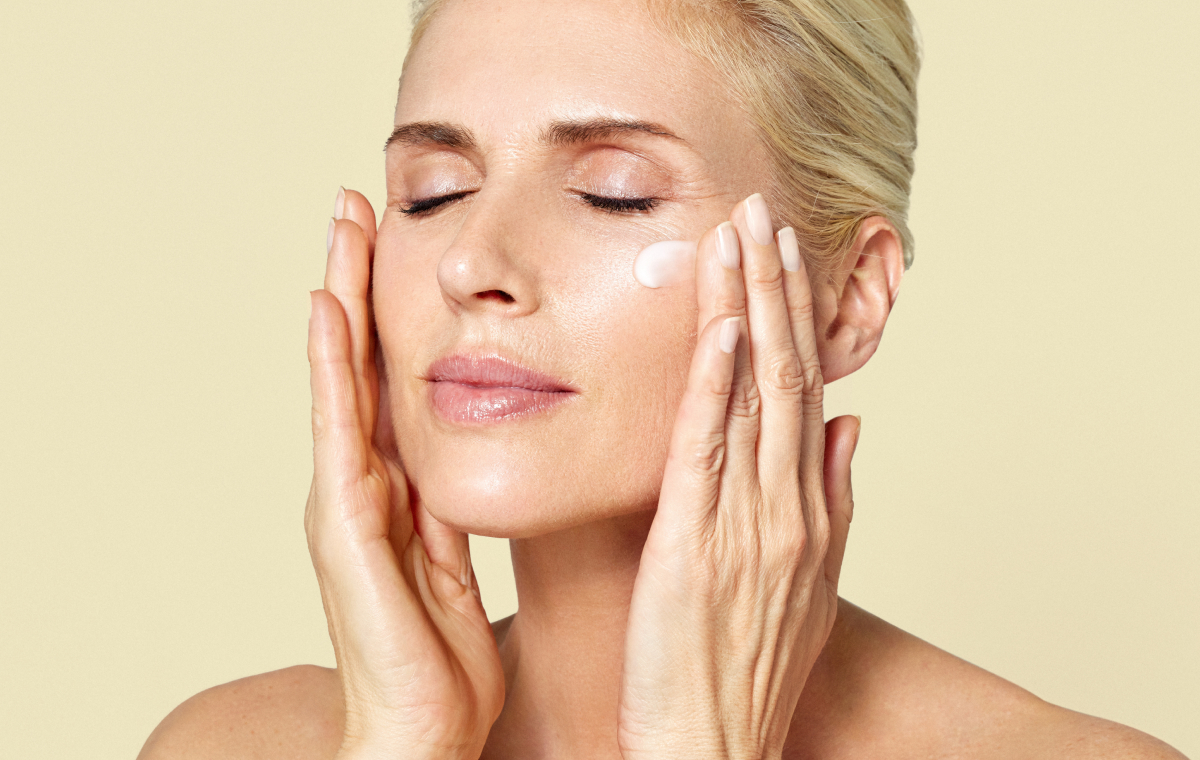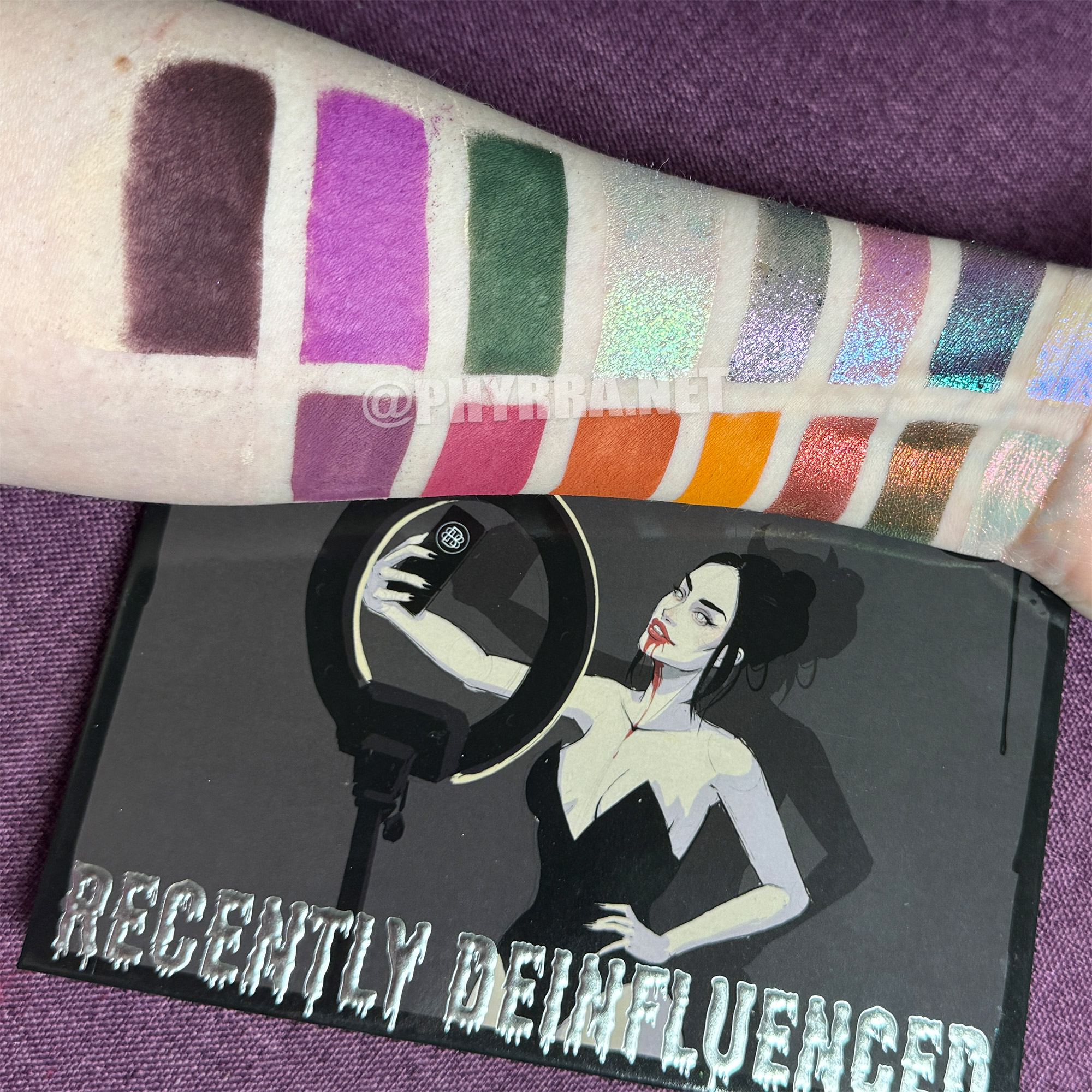
Reading: 4 minutes
Aging isn’t the enemy. But most of us would like to age well. And to do that, we should get to know our skin, inside and out.
That’s why we’re here to explain the why and how behind skin sagging. And the way skincare super-ingredient carnosine can help fight against it. So, if healthy, youthful-looking skin is your goal, it’s time to get to know the benefits of carnosine.
Let’s dive in.
What is skin sagging?
Skin laxity, also known as loss of firmness or sagging, comes about when skin tissues lose their elasticity and the muscles underneath start to give way. It can show up as loose, crepey skin in certain areas of the face. Some of the most common? The eyelids, chin, jaw, and throat.
But before we continue, here’s a gentle reminder: there’s nothing wrong with sagging skin! It’s a natural part of life and doesn’t mean your skin isn’t healthy (priority number one).
What causes skin to sag?
While you might be apt to blame it all on gravity, skin loses its bounce as the years go by due to a variety of factors:
Glycation
First, let’s talk about glycation. Glycation is caused by the presence of excess glucose, or sugar, in skin fibers. This excess triggers an internal reaction where sugar molecules adhere to collagen and elastin proteins.
Usually, these proteins work together to help keep skin firm and supple. However, during glycation, sugars stick to these proteins — forming something called advanced glycation end-products (AGEs). Over time, these end-products make collagen stiff and rigid instead of bouncy and resilient. And ultimately, that can contribute to skin sagging.
Oxidative stress
Another factor in the breakdown of skin’s firmness? Oxidative stress. If your body’s fighting off lots of free radicals from pollution and the like, it may trigger a process called oxidative stress. This produces an increase in enzymes that break down the proteins in the skin that help keep things firm (like collagen).
Different internal and external factors can accelerate oxidation and the signs of skin aging. Smoking, pollution, an unhealthy diet, stress, or a lack of sleep are a few of your skin’s adversaries. But one of them is particularly harmful: sun exposure. In fact, 80% of the skin’s premature aging is due to solar radiation.
Natural aging
Aging is a part of life. And skin aging can start as early as age 20. Fortunately, knowledge is power — understanding why your skin ages can help you do something about it.
The three main layers of your skin are linked by connective tissues. As you age, this tissue slowly loses its firmness and elasticity, which makes the skin thinner and more flaccid. It also loses some of its ability to regenerate itself — and natural restoration is key in combating the signs of skin aging.
What is carnosine?
While it might not sound familiar, carnosine can be found naturally in your body. It’s considered a dipeptide, AKA a powerful pair of amino acids. What’s so special about amino acids? Studies show that they’re what make up some of the most important proteins in your skin: collagen and elastin.
But carnosine is a unique compound. It offers two very helpful services to your skin: antioxidant and antiglycation action. It works to attract and distract harmful sugars and free radicals in your skin. Meaning your skin is free to continue its natural processes and regeneration, without so many interruptions.
The best part? Carnosine products can easily be added to any skincare routine for any skin type, even sensitive skin. Since it’s found naturally in your body, there’s minimal risk of skin irritation — and maximum potential for benefits.
Top 3 carnosine skin benefits
What does carnosine do for the skin? This skincare ingredient is a triple threat, boasting three rejuvenating actions to help revive sagging skin. Let’s break down each one:
1. Boosts firmness
Carnosine can help fight gravity’s effects on your skin. How? By working as an anti-glycation agent.
Skin glycation is the natural process caused by an overload of sugars in skin fibers. Remember, this process causes something called advanced glycation end-products (AGEs) to form in your skin. Over time, the end-products make collagen rigid, meaning that skin may start to sag as it loses its natural structural support.
That’s where carnosine comes in. How does carnosine work to fight glycation and the formation of AGEs? Through distraction: the sugar molecules responsible for skin rigidity stick to the carnosine instead of your collagen, minimizing glycation. Firm, supple skin to follow.
2. Boosts elasticity
You love caring for your skin as much as the next skincare enthusiast. But free radicals and oxidative stress from daily skin foes (think pollution and UV radiation) can undo some of your hard work. Much like glycation, oxidative stress dampens the natural power of collagen and elastin in your skin, causing visible signs of aging to appear.
The good news: carnosine also acts as an antioxidant. When applied topically, antioxidants can help to slow down the processes that break down key proteins in the skin. So plan to add carnosine to your routine to help boost the skin’s natural bounce.
3. Boosts smoothness
Anti-glycation action? Check. Antioxidant action? Yes! Lastly, carnosine has one more benefit in store for your skin. As a dipeptide, it can also help fight crepiness, fine lines, and wrinkles while supporting skin health.
Dipeptides in skincare products are designed to support elastin and collagen production. If you think of your skin like a mattress, collagen fibers are the springs — giving you a smooth, taut look.
But over time, glycation damages our skin’s natural collagen and makes this bouncy support more rigid. Add in the fact that our bodies gradually make less collagen as we get older, and we need all the help we can get.
So, what’s the plan of action? Fortunately, carnosine can work to restore the glycated collagen fibers. Reach for a moisturizer with carnosine to help support skin’s natural state: smooth, healthy, and vibrant.
And above all, love your skin, care for it, and protect it, always.
Rating: 5.0/5. From 2 votes.
Please wait…
Amy is a content strategist who turned a part-time obsession with skincare into a full-time passion. Her experience as a creative storyteller includes a range of lifestyle and technology topics across Washington D.C. and Barcelona. What’s in her travel bag? Eye contour cream and sunscreen, always.






